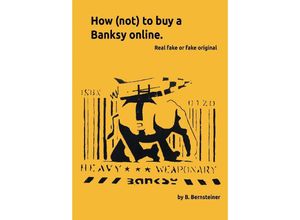Increasing popularity of street art is changing the art market and its laws. What used to be
rather noble and elitist is now tangential to provocation and art from the street and fetches
top prices. A controversy has arisen among artists themselves: whether street art once created
in public space belongs in private collections. An art form that is ephemeral in its basic
nature because graffiti or street art are usually not designed for eternity is countering
increasing commercialization through wanton devaluation artists destroy and remove their works
as soon as they run the risk of becoming valuable or commercially abused sometimes as part of
the public staging. The object documented in the book a rusty wheel clamp which due to
various traces can be attributed to Banksy's environment exemplifies this controversy. Could
an artist want to devalue an original as a forgery or does an alleged forgery thus become an
original?



